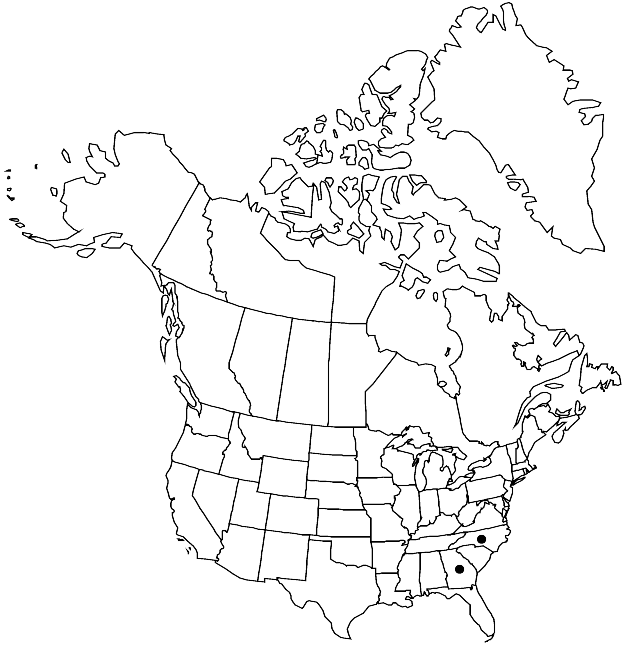Pohlia rabunbaldensis
Bryologist 108: 180, fig. 2. 2005.
Plants small, green to light green, dull. Stems 0.5–1 cm. Leaves ± spreading, slightly contorted when dry, lanceolate to ovate-lanceolate, 0.9–1.2 mm; margins serrulate to serrate in distal 1/3; costa subpercurrent; distal medial laminal cells rhombic to rhomboidal, 45–95 µm, walls thin. Specialized asexual reproduction usually present when sterile; axillary gemmae single, narrowly bulbiform, orange to orange-red, leaf primordia at apex and lower, sometimes to base, laminate, large, flexuose. Sexual condition unknown, presumed dioicous. Sporophytes unknown.
Habitat: Acid, gravelly to sandy soil along trails
Elevation: high elevations
Discussion
Pohlia rabunbaldensis has bulbiform gemmae occurring singly in a leaf axil, similar to those of P. drummondii, but the leaf primordia are even larger relative to the gemma body. Plants of P. rabunbaldensis are slender, with dull leaves much like those of P. annotina, somewhat contorted when dry, distinct from the broader, carinate, somewhat shiny leaves of P. drummondii, which are unchanged on drying.
of conservation concern
Selected References
None.
